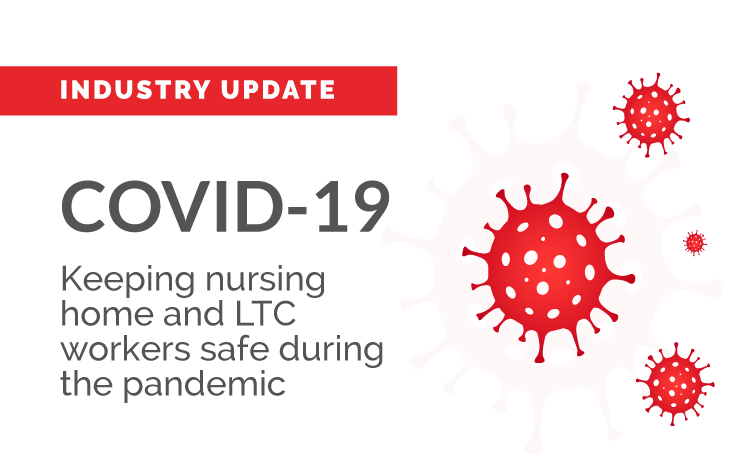On Thursday, May 14, 2020, the U.S. Department of Labor’s Occupational Safety and Health Administration (OSHA) issued an alert providing safety tips employers can follow to help protect nursing home and long-term care facility workers from exposure to the coronavirus.
Safety measures employers can implement to protect workers in the nursing home and long-term care industry include:
- Screen workers and residents regularly for signs and symptoms consistent with the coronavirus. Send sick workers home or to seek medical care;
- Closely monitor and take additional precautions regarding employees and residents who may have been exposed to an individual with the coronavirus;
- Ask visitors to inform the facility if they develop a fever or symptoms consistent with the coronavirus within 14 days of their visit;
- Maintain at least 6 feet between workers, residents, and visitors to the extent possible, including while workers perform their duties and during breaks;
- Stagger break periods to avoid crowding in breakrooms;
- Consider alternatives to in-person large group gatherings (e.g., staff meetings, resident activities);
- Continually monitor personal protective equipment (PPE) stocks, burn rate, and supply chains. Develop a process to decontaminate and reuse PPE, such as face shields and goggles, as appropriate. Follow CDC recommendations for optimization of PPE supplies; and
- Encourage workers to report any safety and health concerns.
This new 1-page alert is available for download in English and Spanish. The alert is new for OSHA as well as a good reminder for LTC workers. I encourage you to download both the English and Spanish (especially if you have Spanish-speaking employees) alert and post in facility breakrooms, by time clocks, etc. – to get the word out.
The alert is the latest effort by OSHA to educate and protect America’s workers and employers during the coronavirus pandemic. OSHA has also published Guidance on Preparing Workplaces for COVID-19, a document aimed at helping workers and employers learn about ways to protect themselves and their workplaces during the ongoing pandemic.
Want to keep up with the changing COVID-19 situation in skilled nursing?




